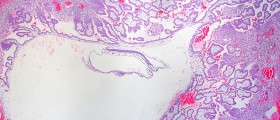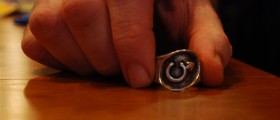Blocked fallopian tubes are a frequent medical complication that, in women of reproductive age, has a high risk of impacting fertility. The fallopian tubes can be blocked for a variety of reasons, including infection and endometriosis. The fallopian tubes are also often intentionally blocked as a permanent form of birth control, using the essure or (before it was discontinued) adiana procedures, a fact that itself illustrates that blocked tubes can lead to infertility.
What treatment options do you have when blocked tubes as the result of a medical problem?

Tubal reanastomosis
This procedure involves eliminating the damaged or blocked part of the affected fallopian tube. After the removal of the diseased portion of the tube, the healthy parts are joined together. Tubal reanastomosis can be done using traditional (open) surgery, but laparoscopy is a less invasive and increasingly popular choice for women with tubal blockages.
Fimbrioplasty
This surgical procedure also requires the removal of the scarred part of a fallopian tube, and that is followed by the rebuilding of any damaged portions of the fallopian tube's wall. Again, this surgery can be carried out laparascopically.
Salpingostomy
A salpingostomy is a surgical procedure in which an opening is created within the blocked fallopian tube. This operation is carried out to allow fluid in the fallopian tubes to drain, and to resolve the blockage, as well as to remove an ectopic pregnancy from a fallopian tube. This procedure does not remove any part of the tube, and instead only targets abnormal tissues and fluids that are inside the fallopian tube. This procedure is suitable for women whose blocked fallopian tubes are caused by fluid buildup. It is questionable whether patients undergoing this operation can retain their fertility is questionable after this procedure, especially if it is done on two sides. It's been used as a form of birth control in the past.
Selective tubal cannulation
A selective tubal cannulation may be the best option for you if your blocked fallopian tubes are damaged at a site that is adjacent to the uterus. During this procedure, which is non-surgical, a small catheter is inserted into the fallopian tube from the uterus, to create an opening. This is often the first point of call when it's been found that a woman has blocked fallopian tubes, and it can allow fluid to drain from your fallopian tubes while preserving your fertility.
When seeking treatment for blocked fallopian tubes, always make sure that you understand your full spectrum of options as a patient, which includes the advantages and disadvantages of each procedure.
















Your thoughts on this
Loading...